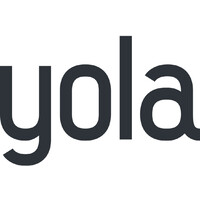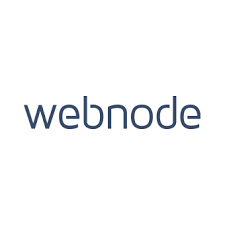Finding and implementing the right HR software or HR Tech solution can be a difficult, uphill battle. The ability to adapt to ongoing changes and new technology implementations is a critical part of long-term business success.
Recent studies show that 25% of new tech projects fail outright, between 20% to 50% demonstrate no measurable ROI, and up to 50% require significant restructuring when finished.

The field of human resources is no exception in this regard. Many HR professionals struggle to get leadership to commit to investing in HR software solutions such as human resource information systems (HRIS) or other HR technology platforms. Once leadership is on board and the contract has been signed, it is often unclear to leaders, and sometimes HR teams, what comes next. To make the most of the HR technology that HR worked so hard to secure for the organization, they must develop and adhere to a strong, strategic change management plan that will set the employees, the organization, and other stakeholders up for success.
Change Management to Implement HR Software Solutions
Companies tend to focus on the technical and project management aspects of change during an implementation process to adopt a new tool, such as HRIS software. The focus falls on the activities that need to happen for the technology to launch, such as onboarding and employee data migration. In doing so, leaders often overlook a key component of successful implementation projects – change management.
Change management addresses the fundamentals of any major organizational transition – its people, processes, and technology. In this mix, the importance of managing the people side of change often gets lost. HRIS implementation, or adopting any other form of technology in the HR department, is no exception.
To address this common oversight, it helps to consider organizational change management conceptually.
While there are many change management methodologies available, two of the more popular and effective are Kotter’s 8-Step Process for Leading Change and Prosci’s ADKAR® Model.
Kotter’s 8-Step Process for Leading Change

Drawn from his book Leading Change, Dr. John P. Kotter’s 8-step process focuses on leading change rather than managing change. Kotter’s steps are:
1. Create a Sense of Urgency: In this step, leaders should focus on inspiring people to act and articulating a clear vision for the future. In the scenario of adopting a new HR system, this means clearly outlining the improved reality that awaits on the other side of a go-live date.
2. Build a Guiding Coalition: Success in any great venture depends on passionate commitment. Building a coalition of committed volunteers in the early stages of change implementation is vital.
3. Form a Strategic Vision: At this point, leaders must communicate to everyone involved how goals for the future differ from the conditions of the present. A current vs. post-rollout vision of the HR department and the HRIS system will improve its efficacy.
4. Enlist a Volunteer Army: Building upon your original coalition of volunteers, strive to attract more enthusiasm and voluntary commitment.
5. Enable Action by Removing Barriers: Leaders should clear the way in advance, identifying any structural or operational barriers in organizational workflows, and change processes to remove them.
6. Generate Short-Term Wins: Track and highlight your early successes. Make sure that everyone sees the positive results of small, effective changes within HR processes.
7. Sustain Acceleration: It falls upon leaders to maintain enthusiasm and sustain the sense of urgency in protracted change processes.
8. Institute Change: When you’ve accomplished your main goals, measure the improvements in the changes you’ve implemented and communicate those results to everyone involved to demonstrate the value of their work in the process.
Prosci’s ADKAR® Model

As certified Prosci® change management practitioners, this is our favorite change management methodology. Prosci’s 5-step model focuses on:
1. Building Awareness of the Change: The process begins when leaders effectively communicate the need for change and cultivate an initial sense of urgency. In the case of a new HRIS or HR technology, the clear benefits of automation and the ability to streamline HR tasks make this relatively easy to convey.
2. Determining Desire for Change: Leaders should make an early assessment of the desire for change throughout the organization. If the leaders prefers the status quo, the benefits of the change are either not validated by the implementation process, or not communicated clearly enough to get buy-in.
3. Providing the Knowledge Necessary: The tools, training, and other mission-critical processes should be made available in advance, eliminating potential bottlenecks. For example, training in operating the new HRIS would be necessary to give your HR department and other stakeholders confidence in the functionality of the platform.
4. Measuring Ability: Every major change process requires a pool of certain skills and talents. Leaders must identify these in their organizations and distribute them effectively.
5. Reinforcing Expectations: Whether technological or cultural, implemented changes don’t necessarily persist on their own. Periodic reinforcement will help ensure the change processes deliver the value expected from them. In the case of an HR Tech implementation, this involves periodic review of the new software’s usage to establish whether its intended benefits translate into realized improvements.
Top Tips for Change Management to Adopt a Core HR Software Solution
Regardless of which change management model you use, change is only as successful as those who are leading it. As Phil Strazzulla states in 5 Practices to Boost HR Tech Adoption, “If the top-level management vocalizes their support for new HR technology, it instills in employees a certain sense of confidence, making them more receptive to change.”
For this reason, we will share our top three actions to take for successful HR software implementations:
- Identify a Strong Executive Sponsor
- Execute Each Section of the Change Management Plan – No Skipping Steps!
- Measure Results
1. Identify a Strong Executive Sponsor
According to Prosci's 2018 Best Practices in Change Management report, 72% of respondents with extremely effective sponsors met or exceeded objectives compared to 29% with extremely ineffective sponsors.
There is no bigger, more important role than that of the executive sponsor in leading change. The executive sponsor serves as the face of the change to employees. According to Harvard Business Review, the executive sponsor also “ensures that the project’s goals are aligned with the overall company strategy, garners support (and overcomes resistance) from other senior executives, and provides ongoing direction as the effort unfolds.”
It is vitally important that leaders identify the right executive sponsor from the beginning and ensure that this person has a full understanding of what their role and responsibilities will be. These sponsors also need to know how they will work with project and change managers, and implementation teams to deliver a successful project launch and conclusion.
2. Execute Each Section of the Change Management Plan – No Skipping Steps!
Whatever Change model is being used, Kotter’s 8-Step Process for Leading Change, Prosci’s ADKAR® Model, or some other model, the most important thing to remember is to not skip steps! While the value of a particular step may not be clear before going through the experience, trust those who have been successful before and commit to the whole process.
Implementing new business processes is often time-sensitive. While it can be tempting to skip steps, just like following driving directions on GPS, you need to follow the map. Skipping steps means missing critical actions that may jeopardize the success of your initiative.
People progress through change differently and as change leaders, HR and leaders must help managers communicate early and often to employees about “the why” of the change. This often means communicating the same information 5-7 times!
Repetition in communication regarding change may seem overly time-consuming, but the implementation plan relies on a high level of clarity. Once employees understand the why, the odds increase significantly and they begin to embrace and become excited to be part of the change. Building voluntary commitment to new HR tools and upgrades early on pays off well in the long run.
3. Measure Results
While reliance on tradition and gut feelings of executives have tended to drive business strategies in the past, more and more organizations are finding value in using extracted data insights to steer important decisions.
This value extends to change management processes - such as implementing new HR software solutions. Once the change has been instituted,, it’s vital to monitor the performance of new systems and processes both to know that they’re creating value and to communicate those improvements to everyone involved.
Work cultures of data-focused project plans and decision-making are on the rise in the U.S., with nearly 80% of organizations shifting to this approach. Fields such as HR may have more complicated metrics of success than sales or marketing, but HR practices and systems still create value. Identifying the right HR data and metrics, such as employee engagement scores and the adoption of employee self-service tools, to monitor your organization will help maintain the changes you implement.

Organizations that focus on the value of data to drive decisions are 58 times more likely to meet or exceed their revenue goals than companies that just wing it. Likewise, a data-driven work culture tracks with an average 5.32% annual revenue increase.
Identify the key performance metrics affected by the software solutions implemented and ensure that visibility into that data is available to those involved in the implementation process. Tracking the differential performance of the change plan will help sustain organizational commitment and help identify critical areas for adjustments and redesign.




























